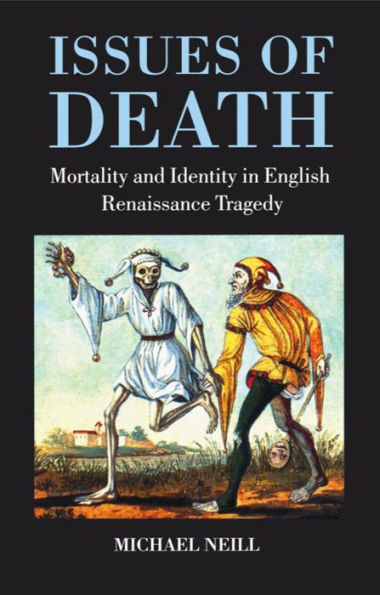Issues of Death: Mortality and Identity in English Renaissance Tragedy
Death, like most experiences that we think of as natural, is a product of the human imagination: all animals die, but only human beings suffer Death; and what they suffer is shaped by their own time and culture. Tragedy was one of the principal instruments through which the culture of early modern England imagined the encounter with mortality. The essays in this book approach the theatrical reinvention of Death from three perspectives. Those in Part I explore Death as a trope of apocalypse -- a moment of un-veiling or dis-covery that is figured both in the fearful nakedness of the Danse Macabre and in the shameful openings enacted in the new theatres of anatomy. Separate chapters explore the apocalyptic design of two of the periods most powerful tragedies -- Shakespeare's Othello, and Middleton and Rowley's The Changeling. In Part 2, Neill explores the psychological and affective consequences of tragedy's fiercely end-driven narrative in a number of plays where a longing for narrative closure is pitched against a particularly intense dread of ending. The imposition of an end is often figured as an act of writerly violence, committed by the author or his dramatic surrogate. Extensive attention is paid to Hamlet as an extreme example of the structural consequences of such anxiety. The function of revenge tragedy as a response to the radical displacement of the dead by the Protestant abolition of purgatory -- one of the most painful aspects of the early modern re-imagining of death -- is also illustrated with particular clarity. Finally, Part 3 focuses on the way tragedy articulates its challenge to the undifferentiating power of death through conventions and motifs borrowed from the funereal arts. It offers detailed analyses of three plays -- Shakespeare's Antony and Cleopatra, Webster's The Duchess of Malfi, and Ford's The Broken Heart. Here, funeral is rewritten as triumph, and death becomes the chosen instrument of an heroic self-fashioning designed to dress the arbitrary abruption of mortal ending in a powerful aesthetic of closure.
1145965882
Issues of Death: Mortality and Identity in English Renaissance Tragedy
Death, like most experiences that we think of as natural, is a product of the human imagination: all animals die, but only human beings suffer Death; and what they suffer is shaped by their own time and culture. Tragedy was one of the principal instruments through which the culture of early modern England imagined the encounter with mortality. The essays in this book approach the theatrical reinvention of Death from three perspectives. Those in Part I explore Death as a trope of apocalypse -- a moment of un-veiling or dis-covery that is figured both in the fearful nakedness of the Danse Macabre and in the shameful openings enacted in the new theatres of anatomy. Separate chapters explore the apocalyptic design of two of the periods most powerful tragedies -- Shakespeare's Othello, and Middleton and Rowley's The Changeling. In Part 2, Neill explores the psychological and affective consequences of tragedy's fiercely end-driven narrative in a number of plays where a longing for narrative closure is pitched against a particularly intense dread of ending. The imposition of an end is often figured as an act of writerly violence, committed by the author or his dramatic surrogate. Extensive attention is paid to Hamlet as an extreme example of the structural consequences of such anxiety. The function of revenge tragedy as a response to the radical displacement of the dead by the Protestant abolition of purgatory -- one of the most painful aspects of the early modern re-imagining of death -- is also illustrated with particular clarity. Finally, Part 3 focuses on the way tragedy articulates its challenge to the undifferentiating power of death through conventions and motifs borrowed from the funereal arts. It offers detailed analyses of three plays -- Shakespeare's Antony and Cleopatra, Webster's The Duchess of Malfi, and Ford's The Broken Heart. Here, funeral is rewritten as triumph, and death becomes the chosen instrument of an heroic self-fashioning designed to dress the arbitrary abruption of mortal ending in a powerful aesthetic of closure.
70.49
In Stock
5
1

Issues of Death: Mortality and Identity in English Renaissance Tragedy

Issues of Death: Mortality and Identity in English Renaissance Tragedy
70.49
In Stock

Product Details
| ISBN-13: | 9780192517906 |
|---|---|
| Publisher: | Oxford University Press |
| Publication date: | 01/07/1999 |
| Sold by: | Barnes & Noble |
| Format: | eBook |
| File size: | 9 MB |
About the Author
From the B&N Reads Blog
